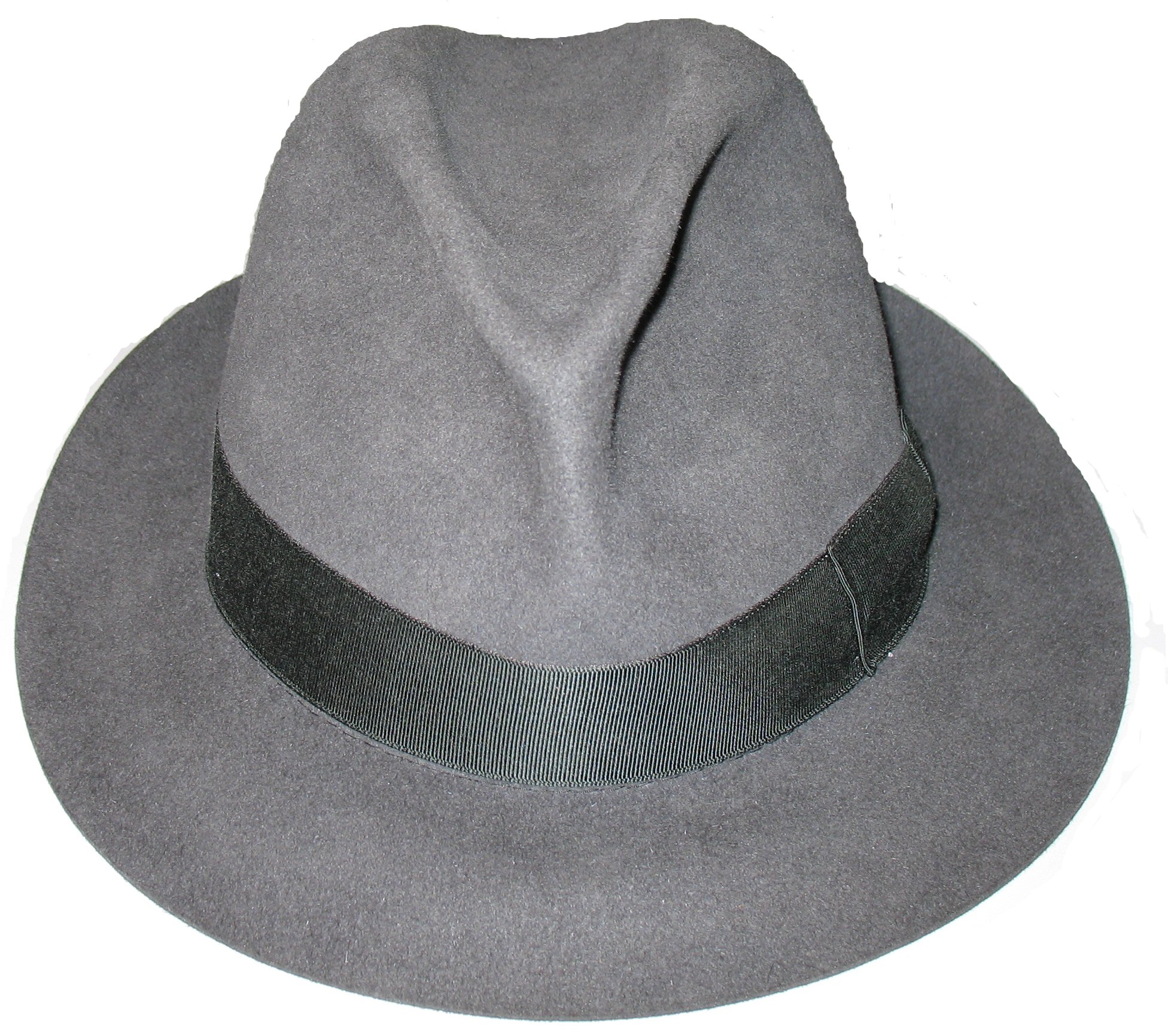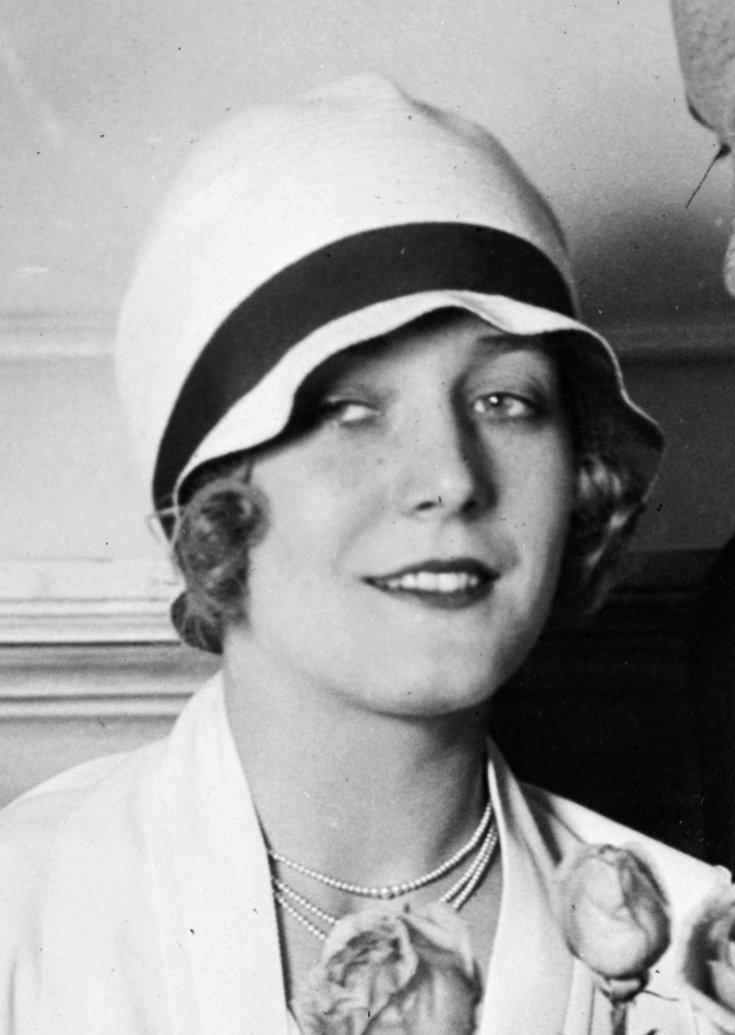|
Barbara Feinman
The Barbara Feinman Millinery is a custom hattery in New York City's East Village. Feinman hats are made by two other milliners using a 100-year-old sewing machine and various materials.The Eye; Value proposition March 2009 page 32 Forbes Life Feinman Feinman studied English at Vassar College and worked 20 years in corporate jobs before taking a millinery class at the Fashion Institute of Technology and switching careers. Her work has been described as elegant and of "impeccable" workmanship with a "dash of whimsy". The store Feinman has retired and sold her business to her former partner Julia Knox. The business is renamed East Village Hats now and has moved over a block to 80 East 7th Street. Julia Knox has added hat making classes taught by herself and guest teachers from around the world. Julia Emily Knox is an English milliner, trained at FIT New York, she leads a small team of milliners at East Village Hats, where they hand craft the hats on the premises, using traditi ... [...More Info...] [...Related Items...] OR: [Wikipedia] [Google] [Baidu] |
Hatter
Hat-making or millinery is the design, manufacture and sale of hats and other headwear. A person engaged in this trade is called a milliner or hatter. Historically, milliners, typically women shopkeepers, produced or imported an inventory of garments for men, women, and children and sold these garments in their millinery shop. Many milliners worked as both milliner and fashion designer, such as Rose Bertin, Jeanne Lanvin, and Coco Chanel. The millinery industry benefited from industrialization during the nineteenth century. In 1889 in London and Paris, over 8,000 women were employed in millinery, and in 1900 in New York, some 83,000 people, mostly women, were employed in millinery. Though the improvements in technology provided benefits to milliners and the whole industry, essential skills, craftsmanship, and creativity are still required. Since the mass-manufacturing of hats began, the term milliner is usually used to describe a person who applies traditional hand-craftsmanshi ... [...More Info...] [...Related Items...] OR: [Wikipedia] [Google] [Baidu] |
East Village, Manhattan
The East Village is a neighborhood on the East Side of Lower Manhattan in New York City. It is roughly defined as the area east of the Bowery and Third Avenue, between 14th Street on the north and Houston Street on the south. The East Village contains three subsections: Alphabet City, in reference to the single-letter-named avenues that are located to the east of First Avenue; Little Ukraine, near Second Avenue and 6th and 7th Streets; and the Bowery, located around the street of the same name. Initially the location of the present-day East Village was occupied by the Lenape Native Americans, and was then divided into plantations by Dutch settlers. During the early 19th century, the East Village contained many of the city's most opulent estates. By the middle of the century, it grew to include a large immigrant populationincluding what was once referred to as Manhattan's Little Germanyand was considered part of the nearby Lower East Side. By the late 1960s, many artists, ... [...More Info...] [...Related Items...] OR: [Wikipedia] [Google] [Baidu] |
Vassar College
Vassar College ( ) is a private liberal arts college in Poughkeepsie, New York, United States. Founded in 1861 by Matthew Vassar, it was the second degree-granting institution of higher education for women in the United States, closely following Elmira College. It became coeducational in 1969 and now has a gender ratio at the national average. The college is one of the historic Seven Sisters, the first elite women's colleges in the U.S., and has a historic relationship with Yale University, which suggested a merger before they both became coeducational institutions. About 2,450 students attend the college. As of 2021, its acceptance rate is 19%. The college offers B.A. degrees in more than 50 majors and features a flexible curriculum designed to promote a breadth of studies. Student groups at the college include theater and comedy organizations, a cappella groups, club sports teams, volunteer and service groups, and a circus troupe. Vassar College's varsity sports teams, kno ... [...More Info...] [...Related Items...] OR: [Wikipedia] [Google] [Baidu] |
Fashion Institute Of Technology
The Fashion Institute of Technology (FIT) is a public college in New York City. It is part of the State University of New York (SUNY) and focuses on art, business, design, mass communication, and technology connected to the fashion industry. It was founded in 1944. Academics Seventeen majors are offered through the School of Art and Design, and ten through the Jay and Patty Baker School of Business and Technology leading to an A.A.S., B.F.A., or B.S. The School of Liberal Arts offers a B.S. in art history and museum professions and a B.S. in film and media. The School of Graduate Studies offers seven programs leading to a Master of Arts, Master of Fine Arts, or Master of Professional Studies. In addition to the degree programs, FIT offers a wide selection of non-credit courses through the Center for Professional Studies. One of the most popular programs is the "Sew Like a Pro" series, which teaches basic through advanced sewing skills. FIT is an accredited institutional member ... [...More Info...] [...Related Items...] OR: [Wikipedia] [Google] [Baidu] |
Hatmaking
Hat-making or millinery is the design, manufacture and sale of hats and other headwear. A person engaged in this trade is called a milliner or hatter. Historically, milliners, typically women shopkeepers, produced or imported an inventory of garments for men, women, and children and sold these garments in their millinery shop. Many milliners worked as both milliner and fashion designer, such as Rose Bertin, Jeanne Lanvin, and Coco Chanel. The millinery industry benefited from industrialization during the nineteenth century. In 1889 in London and Paris, over 8,000 women were employed in millinery, and in 1900 in New York, some 83,000 people, mostly women, were employed in millinery. Though the improvements in technology provided benefits to milliners and the whole industry, essential skills, craftsmanship, and creativity are still required. Since the mass-manufacturing of hats began, the term milliner is usually used to describe a person who applies traditional hand-craftsmanshi ... [...More Info...] [...Related Items...] OR: [Wikipedia] [Google] [Baidu] |
Anarchy
Anarchy is a society without a government. It may also refer to a society or group of people that entirely rejects a set hierarchy. ''Anarchy'' was first used in English in 1539, meaning "an absence of government". Pierre-Joseph Proudhon adopted ''anarchy'' and ''anarchist'' in his 1840 treatise ''What Is Property?'' to refer to anarchism, a new political philosophy and social movement that advocates stateless societies based on Free association (Marxism and anarchism), free and voluntary associations. Anarchists seek a system based on the abolition of all coercive hierarchy, in particular the state, and many advocate for the creation of a system of direct democracy, worker cooperatives or privatization. In practical terms, ''anarchy'' can refer to the curtailment or abolition of traditional forms of government and institutions. It can also designate a nation or any inhabited place that has no system of government or central rule. Anarchy is primarily advocated by individual anar ... [...More Info...] [...Related Items...] OR: [Wikipedia] [Google] [Baidu] |
Counterculture
A counterculture is a culture whose values and norms of behavior differ substantially from those of mainstream society, sometimes diametrically opposed to mainstream cultural mores.Eric Donald Hirsch. ''The Dictionary of Cultural Literacy''. Houghton Mifflin. . (1993) p. 419. "Members of a cultural protest that began in the U.S. In the 1960s and Europe before fading in the 1970s... fundamentally a cultural rather than a Protest, political protest." A countercultural movement expresses the ethos and aspirations of a specific population during a well-defined era. When oppositional forces reach Critical mass (sociodynamics), critical mass, countercultures can trigger dramatic cultural changes. Prominent examples of countercultures in the Western world include the Levellers (1645–1650), Bohemianism (1850–1910), the more fragmentary counterculture of the Beat Generation (1944–1964), followed by the globalized counterculture of the 1960s (1964–1974). Definition and characteris ... [...More Info...] [...Related Items...] OR: [Wikipedia] [Google] [Baidu] |
Fedora
A fedora () is a hat with a soft brim and indented crown.Kilgour, Ruth Edwards (1958). ''A Pageant of Hats Ancient and Modern''. R. M. McBride Company. It is typically creased lengthwise down the crown and "pinched" near the front on both sides. Fedoras can also be creased with teardrop crowns, diamond crowns, center dents, and others, and the positioning of pinches can vary. The typical crown height is . The term ''fedora'' was in use as early as 1891. Its popularity soared, and eventually it eclipsed the similar-looking homburg. The fedora hat's brim is usually around wide, but can be wider, can be left raw-edged (left as cut), finished with a sewn overwelt or underwelt, or bound with a trim-ribbon. ''Stitched edge'' means that there is one or more rows of stitching radiating inward toward the crown. The Cavanagh edge is a welted edge with invisible stitching to hold it in place and is a very expensive treatment that can no longer be performed by modern hat factories. [...More Info...] [...Related Items...] OR: [Wikipedia] [Google] [Baidu] |
Cloche Hat
The cloche hat or simply cloche () is a fitted, bell-shaped hat for women that was invented in 1908 by milliner Caroline Reboux. They were especially popular from about 1922 to 1933. Its name is derived from ''cloche'', the French word for "bell". The popularity and influence of cloche hats was at its peak during the early twentieth century. Couture houses like Lanvin and Molyneux opened ateliers to join milliners in manufacturing hats that precisely matched their clothing designs. The hats even shaped hairstyles: the Eton crop – the short, slicked-down cut worn by Josephine Baker – became popular because it was ideal to showcase the hats' shape. Design Cloche hats were usually made of felt so that they conformed to the head, and were typically designed to be worn low on the forehead, with the wearer's eyes only slightly below the brim. In later years, a summer cloche might be made from sisal or straw. Cloches could also be made of beads or lace for evening wear, ... [...More Info...] [...Related Items...] OR: [Wikipedia] [Google] [Baidu] |
Retro
Retro style is imitative or consciously derivative of lifestyles, trends, or art forms from history, including in music, modes, fashions, or attitudes. In popular culture, the "nostalgia cycle" is typically for the two decades that begin 20–30 years ago. Definition The term ''retro'' has been in use since 1972 to describe on the one hand, new artifacts that self-consciously refer to particular modes, motifs, techniques, and materials of the past. But on the other hand, many people use the term to categorize styles that have been created in the past. Retro style refers to new things that display characteristics of the past. Unlike the historicism of the Romantic generations, it is mostly the recent past that retro seeks to recapitulate, focusing on the products, fashions, and artistic styles produced since the Industrial Revolution, the successive styles of Modernity. The English word ''retro'' derives from the Latin prefix ''retro'', meaning backwards, or in past times. In Fra ... [...More Info...] [...Related Items...] OR: [Wikipedia] [Google] [Baidu] |
Film Noir
Film noir (; ) is a cinematic term used primarily to describe stylish Hollywood crime dramas, particularly those that emphasize cynical attitudes and motivations. The 1940s and 1950s are generally regarded as the "classic period" of American ''film noir''. Film noir of this era is associated with a low-key, black-and-white visual style that has roots in German Expressionist cinematography. Many of the prototypical stories and much of the attitude of classic noir derive from the hardboiled school of crime fiction that emerged in the United States during the Great Depression. The term ''film noir'', French for 'black film' (literal) or 'dark film' (closer meaning), was first applied to Hollywood films by French critic Nino Frank in 1946, but was unrecognized by most American film industry professionals of that era. Frank is believed to have been inspired by the French literary publishing imprint Série noire, founded in 1945. Cinema historians and critics defined the category ... [...More Info...] [...Related Items...] OR: [Wikipedia] [Google] [Baidu] |








.png)